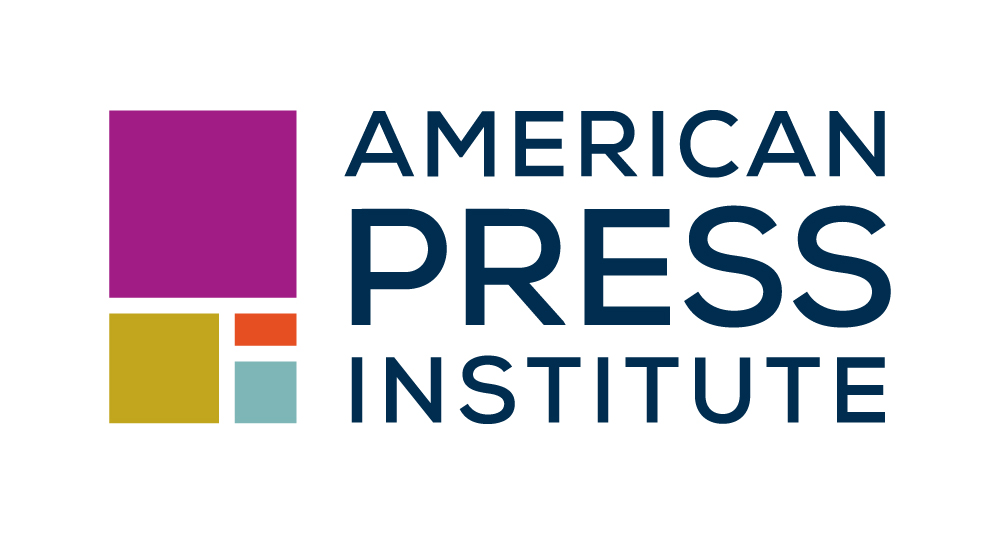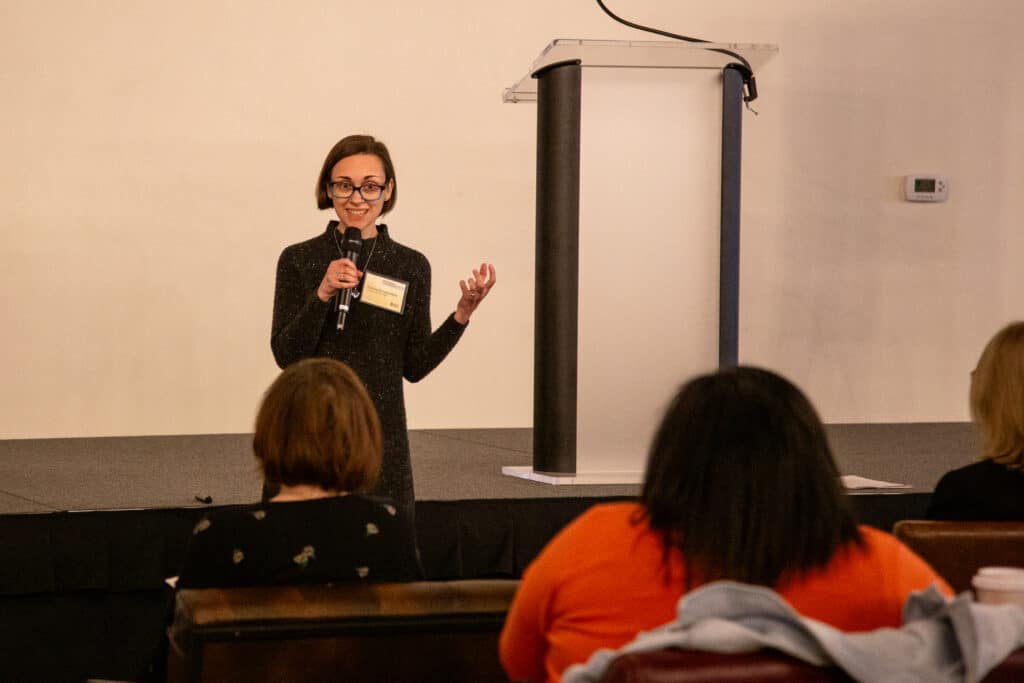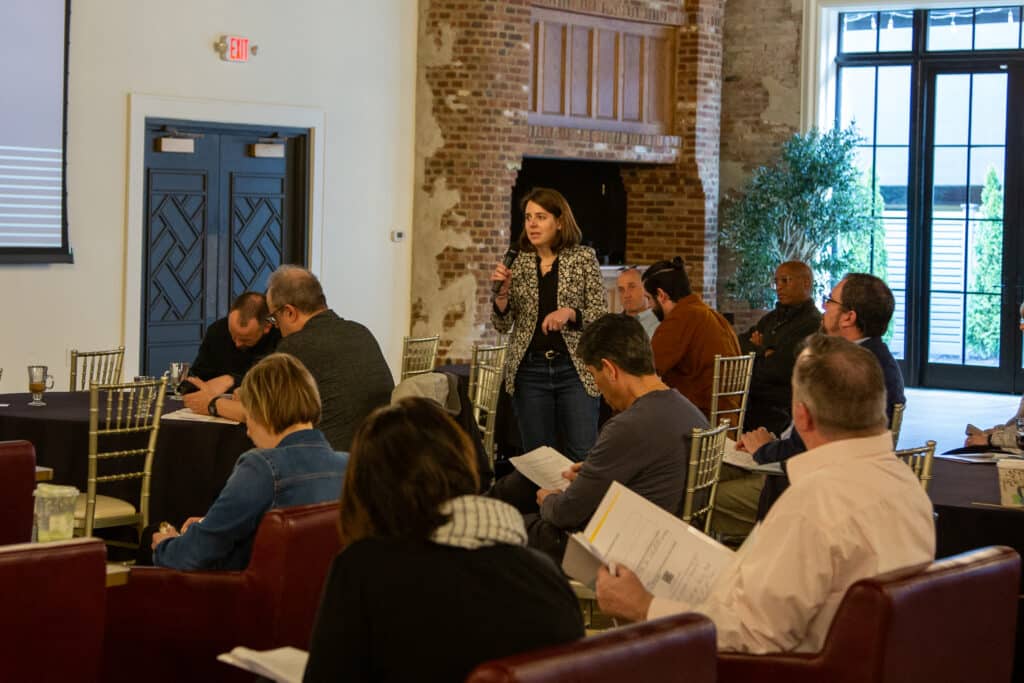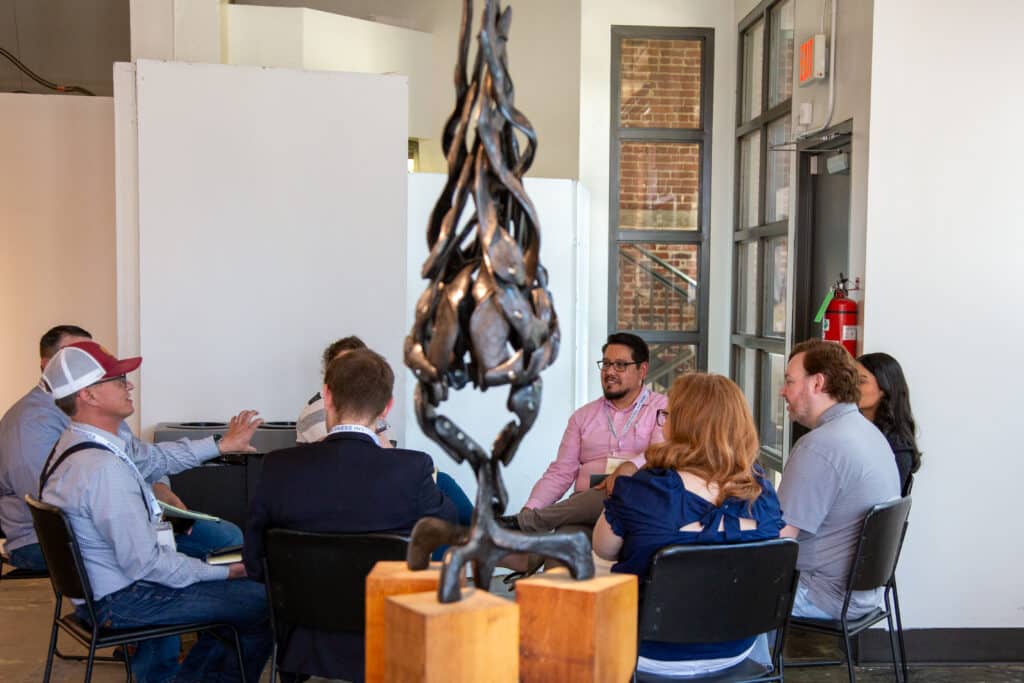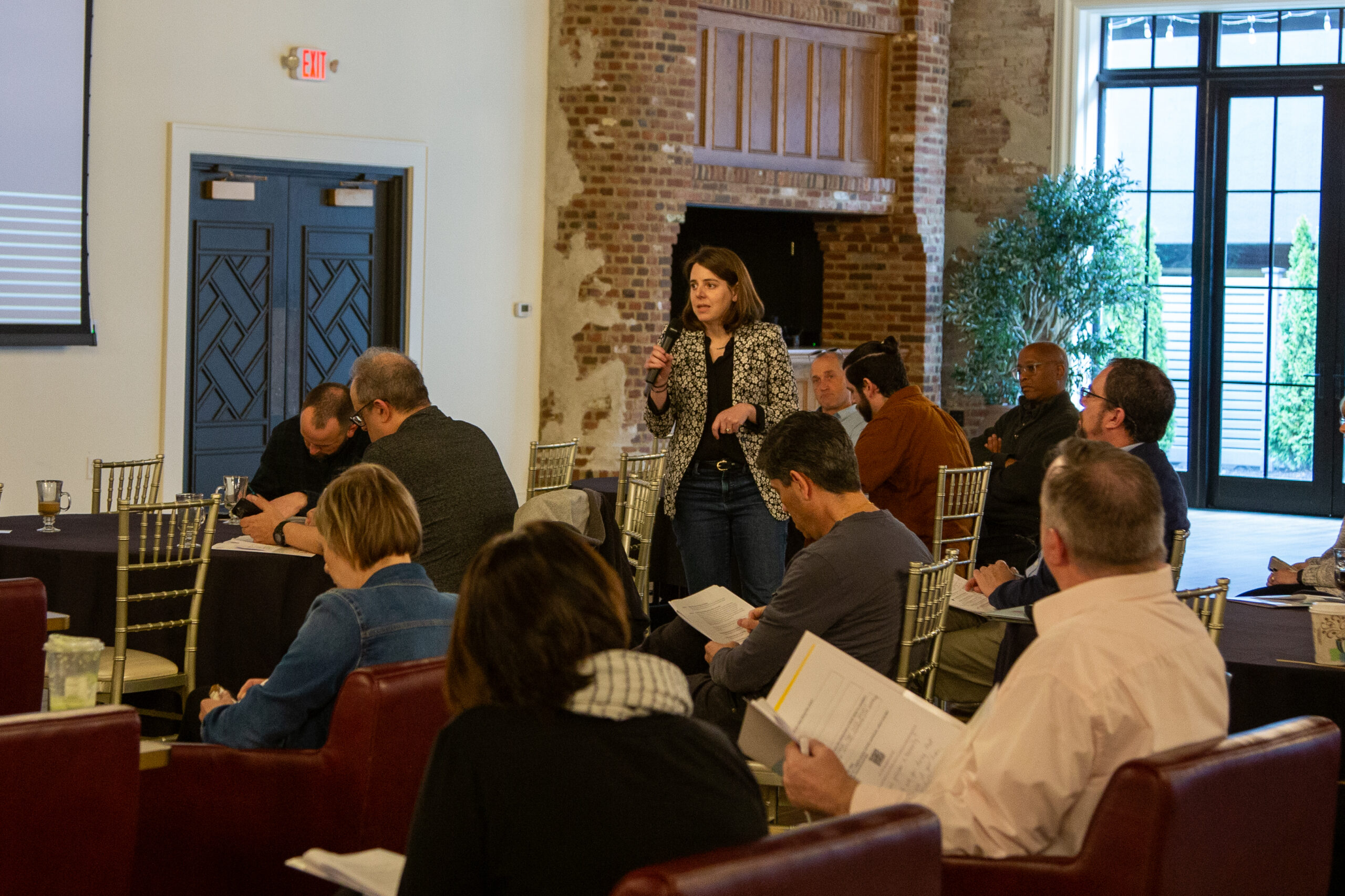
At More in Common, we’ve spent seven years studying polarization in the U.S. Like many organizations focused on pluralism, we often point to media as a key driver of division; — conflict sells, and platforms profit by amplifying it. Yet journalists are often absent from spaces where pluralism practitioners convene.
This is where I’ve seen the work of the American Press Institute come into play. API bridges the gap between pluralism practitioners and journalists, fostering relationships and creating spaces for collaboration. That’s how, in spring 2024, I found myself in Akron, Ohio, spending three days with local news leaders learning about their challenges, priorities and the opportunities for our research to support them. Here are some themes that emerged during the API Local News Summit on Elections, Trust and Democracy and the months since.
1. Local news is a pillar of community life.
When I think of community “institutions,” I think of food banks, libraries, churches or schools — places that provide essential services and foster connection. Local news clearly belongs in this category. It does far more than just serve as a platform to report local happenings. Local news has the power to share stories of residents and help people learn about new things and new people they otherwise may never have known. They highlight events and share community happenings that otherwise may not be covered or known about if not featured by news outlets. All of these activities and more are critical to foster thriving communities.
2. Local news leaders really, really care about the places where they live.
The local journalists I met were driven by a profound commitment to the places they call home. Despite the immense challenges facing local news outlets — financial pressures, declining readership and competition for time — these journalists go above and beyond to serve their communities. They strive to make voter guides accessible, amplify underrepresented voices and cover stories that matter to their neighbors. Their passion for community service mirrors the dedication of nonprofit leaders, revealing a shared mission to make their communities better places to live.
3. Engagement with journalists forces us to be better communicators of our work.
In the summit’s setting, our aim was not to pitch our findings, but to share what we thought were most relevant to help journalists do their job better. Aligning with journalists’ “get to the point” expectations, we were challenged to design our sessions to be concise and direct. It really forced us to think through what is relevant and how we can share insights in a way where we are not telling journalists how to do their job, but what learnings we’ve found that could make them better at theirs and serve as disruptors, not contributors, of polarization. These experiences help us build our communication muscles to distill key insights more effectively to key audiences.
4. Take the opportunity to build connections into partnerships.
The connections we built through API’s network unlocked new opportunities. A connection made over drinks at happy hour led to two interviews to share about our research on perception gaps and polarization to their audiences. More significantly, we developed a deep partnership with the Kansas City Star as part of our research on social connection across differences in Kansas City. Through this collaboration, the Star provided input on our research questions and included their own in our survey. They also attended our focus groups to hear residents discuss trust, social connection and regional dynamics firsthand. These interactions culminated in plans to publish an op-ed and work together to help implement our findings in ways that can help them better engage new audiences. Such outcomes were only possible because of an initial engagement that allowed a relationship to flourish.
5. News leaders have an interest in disrupting polarization.
Local news leaders are uniquely positioned to be bridge builders, and their interest in doing so — which is not a surprise given the commitment to serving their communities — was evident throughout the summit. News stories shape perspectives, especially in an era when people are less likely to encounter differing viewpoints through personal interactions. Here are some research-backed tips we shared:
- Highlight identities beyond politics: People’s political views are often not their most defining traits. Elevating other aspects of identity can foster deeper understanding and reveal hidden commonalities.
- Tell the “why” behind beliefs: Sharing stories that explain what shapes someone’s beliefs can help audiences understand differing perspectives, even if they don’t agree.
- Share stories of changed minds: Examples of people evolving their views can give others permission to reconsider their own.
- Leverage norms to inspire connection: When people see others in their community connecting across differences, they’re more likely to be interested in doing the same. Amplifying stories of bridging divides can shift focus from conflict to connection.
If we identify media as a driver of polarization, we must also engage with it proactively. Many journalists are deeply committed to serving their communities, not dividing them. Building relationships, understanding their challenges and sharing insights are essential steps if we’re serious about reducing polarization and fostering greater understanding in our country.
Kate Carney is Deputy Director of More in Common US, an research organization working to understand the forces driving us apart, find common ground, and help bring Americans together to tackle our shared challenges.
